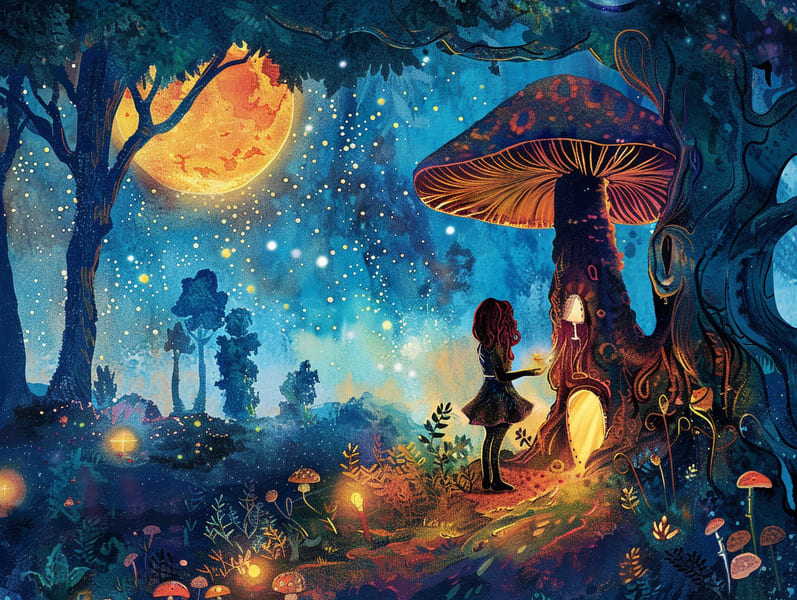The Beginning of Grimm's Fairy Tales and the Unwavering Fascination.
The Beginning of Grimm's Fairy Tales and the Unwavering Fascination.
Blog Article

Classic fairy tales have historical significance. These tales have been transmitted from one generation to the next ages before they were ever recorded. They came from a variety of traditions, including American traditions. They were initially transmitted among mature audiences, often carrying themes and messages pertaining to the societal norms and beliefs of the time.
The renowned Brothers Grimm, the two Grimm brothers, were among the first to gather many of these beloved stories. Their volume, "Grimm's Fables," included narratives like "Cinderella," "Hansel and Gretel," and "Snow-White and Rose-Red," which have since become hallmarks in the world of famous fairy tales. Similarly, the Danish author's fantastical narratives, such as "The Story of the Little Mermaid," and "The Duckling that Could," have won hearts worldwide, ensuring their place in the pantheon of timeless fairy tales.
Though they are old, these stories remain as significant as ever, especially as kids' bedtime tales. These magical stories are now available in various formats, including richly illustrated books, fantastical animations, and online storybooks.
Their lasting appeal can be attributed to several charming aspects:
Moral Lessons: Old fairy tales often share important moral lessons. Stories like "The Shepherd Boy and the Wolf" teach the significance of honesty, while "The Race of the Tortoise and the Hare" underline the values of perseverance and meekness. These narratives offer the young clear distinctions between good and bad, guiding their moral compass in a kind yet important way.
Sympathy and Perception: Ancient fairy tales frequently showcase characters facing difficulties and adversities, provoking young readers to feel with their struggles and applaud their triumphs. For instance, "The Story of Beauty and the Beast" emphasizes the importance of seeing beyond the surface to see the true nature of a soul, building kindness and perception.
Cultural Comprehension: Many classic fairy tales are rich in the cultural contexts from which they originated. Exploring these tales can provide delightful insights into different societies, cultivating a sense of cultural appreciation and knowledge.
Imagination and Innovation: The mythical elements in classic fairy tales—fairy godmothers—engender children’s innovative ideas. These narratives lead readers to magical realms, generating imaginative dreams and a sense of awe that endures a lifetime.
Old fairy tales are not only charming but also enlightening. They act as delightful tools in building various mind and heart abilities in children. When old fairy tales are read aloud, they boost verbal development by showing new vocabulary and complicated sentence structures. This practice also fosters auditory perception and mindfulness, as young ones stay focused, looking forward to see what happens next.
Furthermore, deliberating the themes and characters of classic fairy tales can cultivate cognitive skills and problem-solving abilities. Kids are instructed to recognize patterns, foresee events, and get cause and effect. These debates also advance little ones voice their thoughts and feelings, adding to their emotional intelligence.
In today’s digital age, the existence of online fairy tales has made these stories more attainable than ever. Online resources and applications supply extensive collections of timeless fairy tales that can be seen or listened through anytime, anywhere. Fairy tales spoken are particularly sought after, extending an engaging way for young readers to be a part of these spellbinding stories. Read-aloud stories and read-aloud videos bring characters and settings to life, often supported by spellbinding sound effects and tunes that amplify the storytelling experience.
The unending appeal of traditional fairy tales lies in their ability to alter to present days while preserving their core messages. Contemporary versions of these fairy tales often bring in more varied figures and modern settings, making them relevant to today’s audience. However, the key lessons of guts, warmth, and fair play remain unchanged, continuing to resonate with young readers of all ages.
Traditional fairy tales also offer a sense of reassurance and knownness. They deliver up a tidy narrative with a straightforward beginning, middle, and end, often wrapping up with the wrap-up of conflicts and the triumph of good over bad. This constancy can be consoling for little ones, furnishing a sense of firmness in an unstable world.
Traditional fairy tales continue to spellbind and teach new generations, maintaining their wonder and value in modern society. As bedtime stories for kids, they introduce a perfect blend of charm and understanding, furthering moral values, empathy, and creativity. The existence of internet fairy tales and the prevalence of fairy tales voiced make sure that these timeless tales remain accessible to new generations.
By safeguarding and relating these tales, we continue to celebrate the rich tapestry of legends and cultural heritage. Whether you are discovering a richly illustrated book, seeing a electronic collection, or listening to an spoken story, the wonder of old fairy tales is always within reach. These narratives emphasize of the eternal nature of storytelling and its ability to gather us across centuries and lands.
Even if you are accessing a beautifully illustrated book, seeing a internet library, or listening via an audiobook, the grace of classic fairy tales is always within reach.
These tales illustrate of the timeless force of stories and its here ability to gather us across eras and regions, establishing a link that enchants and educates alike.